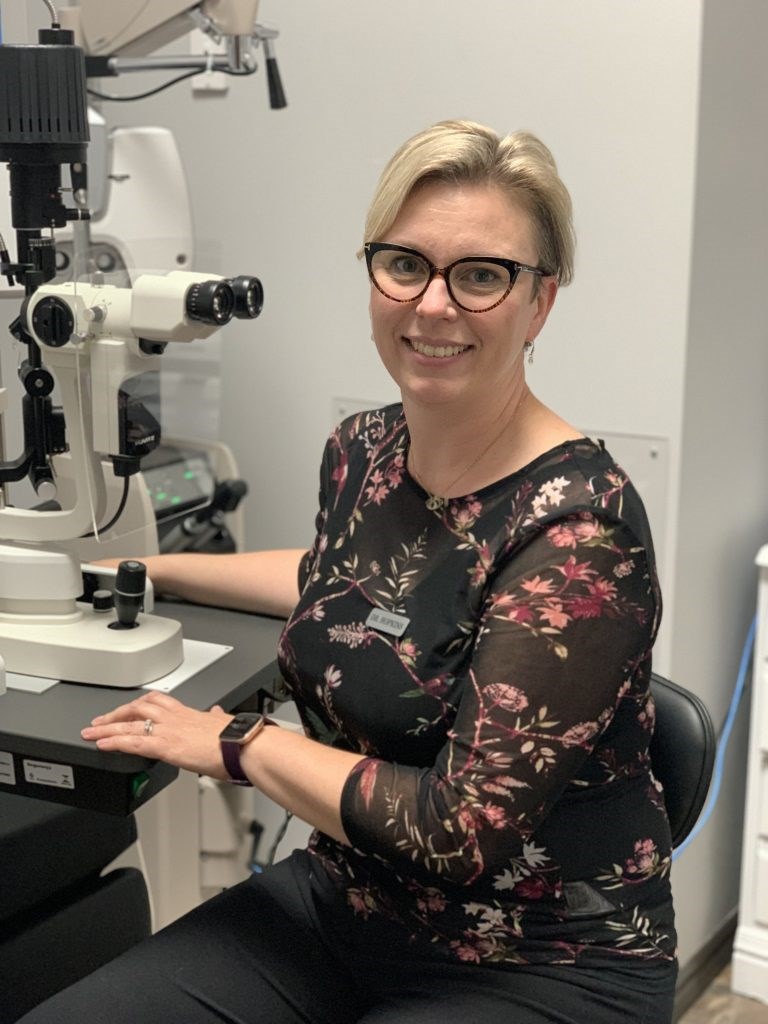
Ontario optometrists are continuing to withhold services that are underfunded by the province.
Members of the Ontario Association of Optometrists began their job action Wednesday, and will continue to do so until the province agrees to fund the cost of services that are covered by OHIP, and at a rate that is about half of the actual cost.
Dr. Marianne Hopkins was be at her Eye Doc clinic on Mary Street Wednesday, as she has been throughout the pandemic, even when her services were deemed non-essential and she had to close her doors.
The optometrist won’t have to close her doors, but she won’t be seeing patients whose eye care is covered by OHIP.
“We’re going forward with the job action,” she said last Tuesday morning, and expected it to continue until the province agrees to fund OHIP-insured eye care to the cost of delivering those services.
Optometrists have for years been subsidizing about 50 per cent of the cost of eye tests for children and seniors. Those appointments are covered by OHIP, but are drastically underfunded, says Hopkins.
The Ontario Association of Optometrists has been trying for decades to change that, and recently had been looking for third party mediation with the Ministry of Health, but at least up to the last minute, that hasn’t happened.
The OAO said in a press release it “remains committed to the principle that any agreement must ensure that, at a minimum, the compensation that an optometrist receives for providing insured services covers the overhead and operating costs of those services. Until the government commits to this principle, the Sept. 1 deadline for service withdrawal remains in place.”
In recent months, a campaign by the OAO saw about 100,000 patients send letters to the ministry, asking the government to fund OHIP-insured eye care to the cost of delivery, which includes annual eye tests for children, seniors and some people who suffer from diseases, such as diabetes, that affect their vision, says Hopkins.
The Ministry of Health agreed to meet with the OAO on Aug. 5, said the press release, and the OAO proposed a formal negotiation process, including a commitment that optometrists no longer be forced to subsidize the delivery of eye care to OHIP patients.
“This principle of cost recovery was immediately rejected by the Ministry. After one meeting, the Ministry declared an impasse,” the statement said.
Dr. Richard Saari of the OAO said Tuesday there had been no talks for about a week, when the Ministry of Health went public with the discussions that were occuring at the bargaining table.
He didn’t expect anything further that might call off the job action, he said, “given the government hasn’t agreed to solve the problem.” And he expected it could continue until the province offered the requested level of funding.
While optometrists can continue to see patients, they won’t be able to see those who are under 20, over 65, or who have illnesses that affect their eyes, in which case their eye care is covered by OHIP.
There are only about 2,400 optometrists in Ontario, and they don’t get the same attention from the government as other health providers, says Hopkins. “We’re just a small group, but we’re in this together now.”
In 2020, Hopkins bought the Mary Street practice of Dr. Kim Robertson Woods, who is still a part of the clinic, which has five doctors, and supports 13 families, including those of staff.
There has been little increase in OHIP payments for eye care in the last 30 years, Hopkins says, and 85 per cent of the patients they see at her office are funded through OHIP.
“It’s affecting my business in a huge way. This is a battle for down the road, to have sustainable eye care for the most vulnerable. That’s important to us,” says Hopkins. “We shouldn’t have to run at a loss for providing a service.”
But the province, and not just the current government, but going back almost three decades, “ignores that. Other medical professionals have the ability to negotiate. We don’t have the ability to table our concerns.”
Early in the pandemic, optometrists were not considered essential, and Hopkins says she sat in her office, making herself available to see patients in emergency situations, although the Mary Street doors were closed. “I can tell you, we are essential. I saw emergency patients I wouldn’t want to see go to the hospital and be misdiagnosed.”
The amount OHIP pays for eye tests wasn’t sustainable before the pandemic, “and it’s definitely not during the pandemic,” she says. “And it’s not done yet, not back to normal yet.”
In addition to overhead and staffing, the equipment an optometrist relies on now is expensive. “We’ve become a very medical practice. Our patients know what kind of care they’re getting, because we do things very thoroughly.”
Hopkins says she has had “overwhelming support” from people who have been amazing, and very loyal to the office. For their sake, she hopes this will be settled soon.
“I don’t have any idea when this job action will be over. I’m certainly hopeful it will be sooner rather than later. In the meantime, I’ll be talking to people on the phone, and seeing emergencies when needed. Other than that, we’ll be taking it day by day.”